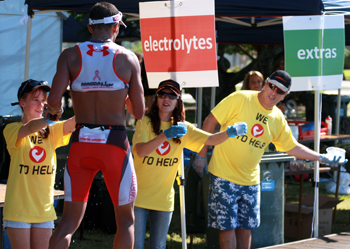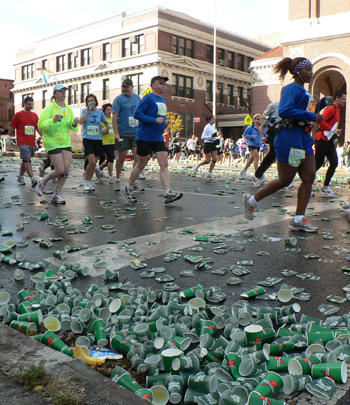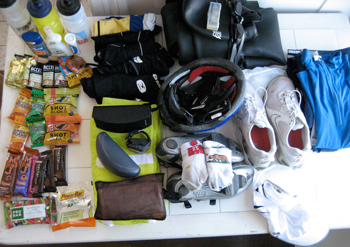The main goal with fueling during exercise is to maintain your available energy (glucose levels) and to replace any fluid loss you experience through breathing and sweating. This will not only prevent you from hitting that proverbial wall during your event but also improve your overall performance.
This is particularly important if you did not do a good job properly fueling prior to your event or if you are exercising in extreme conditions such as high heat, cold, or high altitude which demands more from your body.
Here are Five Tips on How to Properly Fuel During Exercise:
- Stay hydrated. Hydration is absolutely key to optimal performance. Try to start drinking shortly after you begin your event and drink often (about every 15 minutes), but not so much that your weight increases from fluid intake. The goal is to prevent loss of water weight which is a sign of dehydration. Stopping at all hydration points along your race route is a good idea.

- If you drink water, be sure you are also consuming an energy gel, bar, or switching back and forth with a sports drink. Drinking excessive amounts of water while working out may lead to the development of hyponatremia—or low sodium—which can be very dangerous. Drinking a sports drink is an excellent option because it will provide you not only with electrolytes and easily digestible carbohydrates, but also with hydration.
- Stay fueled. Most adults should shoot for 30-60 grams of carbohydrate per hour during events lasting more than an hour. Research from Asker Jeukendrup, PhD, FACSM with the School of Sport and Exercise Sciences, University of Birmingham, United Kingdom showed that one can consume up to 90 grams of carbohydrate if the carbohydrate is coming from multiple types of sugars. An ideal balance would be a 2:1 ratio of glucose to fructose (such as Power Bar Energy Blasts made with C2 Max). This higher carbohydrate intake may be beneficial for high intensity events lasting four or more hours. Consuming greater than 60 grams of a single source such as a pure glucose will most likely lead to gut troubles as your body cannot absorb more than 60 grams of a single type of sugar within an hour. Try different carbohydrate amounts during training to determine how much carbohydrate you can take in without causing you any stomach troubles.

- A great way to stay fueled during your race is to consume sports gels, sports gummies, or other easily digestible carbohydrate that is low in fat, fiber, and protein. You want to keep the food simple and easy to breakdown into energy because your blood flow is directed to your muscles powering your event instead of the gut for digestion and most sports gels, gummies, and drinks provide a mix of carbohydrate types. My favorites include the GU Energy Gel in Blackberry and the Hammer Gel in Montana Huckleberry. Protein, fat, and fiber should be limited as they will delay digestion and gastric emptying which can cause gut distress and also decreases the rate at which water is absorbed affecting your hydration.

- Check out your race’s website to determine which brands of sports drink or fuel they will be handing out during the race. Try using these forms of fuel during training to see if they sit well with you. If not, or if you just don’t like them, try experimenting with other brands and flavors to see what you like and tote those around in a small runners waist pack during the race.
What is your favorite way to stay fueled during an event?
Photo credits:
Hydration station: Matthew Kenwrick via photopin cc
Gatorade cups: iandavid via photopin cc
Athlete's food:Mat Honan via photopin cc
References:
Jeukendrup, A. Carbohydrate Supplementation During Exercise: Does it help? How much is too much?. Gatorade Sports Science Exchange. 2007. 20 (3):1-8.
Position of the American Dietetic Association, Dietitians of Canada, and the American College of Sports Medicine: Nutrition and Athletic Performance. J Am Diet Assoc. 2009. 109:509-527.
Rosenbloom, C. Food and Fluid Guidelines Before, During, and After Exercise. Nutr. Today. 2012.47 (2): 63-69.



